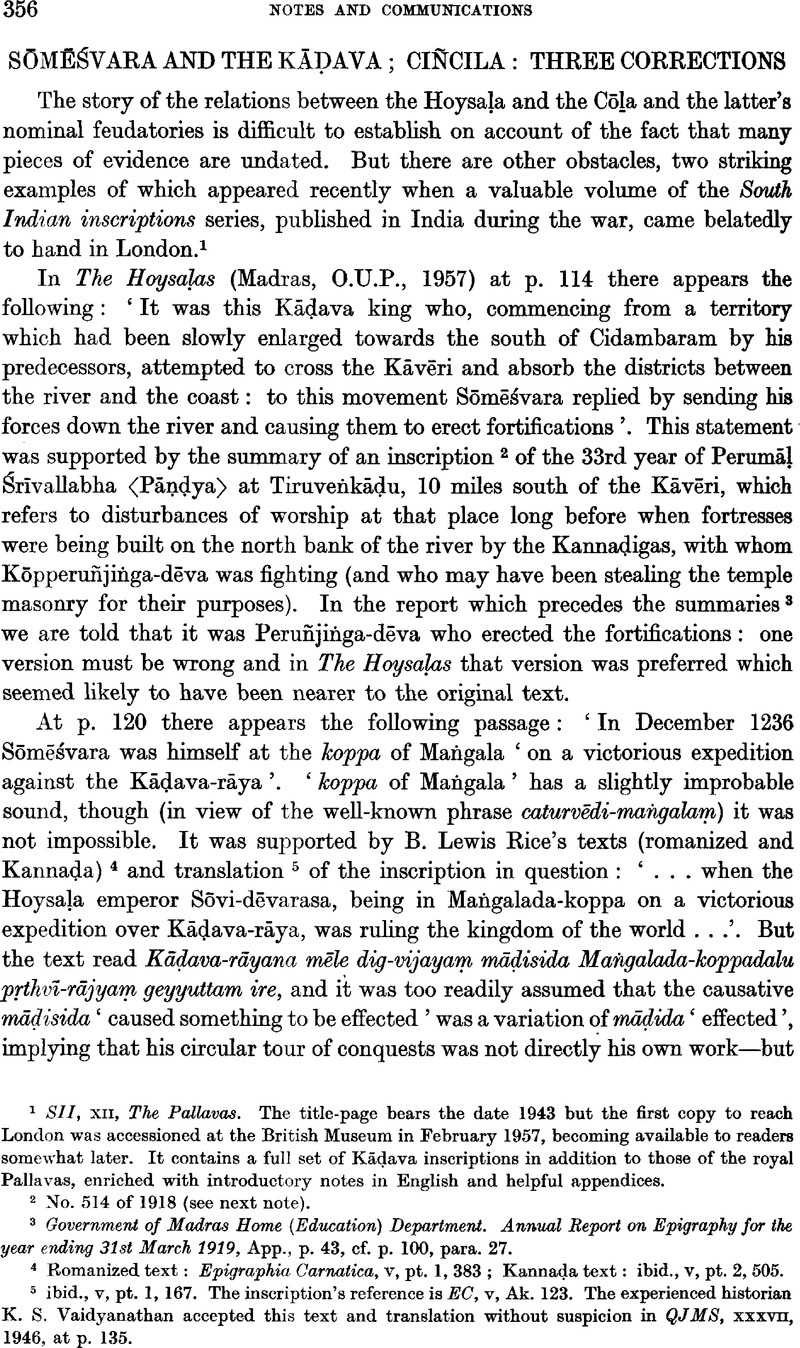Published online by Cambridge University Press: 24 December 2009

1 SII, XII, The Pallavas. The title-page bears the date 1943 but the first copy to reach London was accessioned at the British Museum in February 1957, becoming available to readers somewhat later. It contains a full set of Kādava inscriptions in addition to those of the royal Pallavas, enriched with introductory notes in English and helpful appendices.
2 No. 514 of 1918 (see next note).
3 Government of Madras Home (Education) Department. Annual Report on Epigraphy for the year ending 31st March 1919, App., p. 43, of. p. 100, para. 27.
4 Romanized text: Epigraphia Carnatica, v, pt. 1, 383; Kannada text: ibid., V, pt. 2, 505.
5 ibid., v, pt. 1, 167. The inscription's reference is EC, v, Ak. 123. The experienced historian K. S. Vaidyanathan accepted this text and translation without suspicion in QJMS, XXXVII, 1946, at p. 135.
1 Introd., p. xi.
2 ibid.
3 See inscr. no. 129 of the same volume.
4 It is at long. 74° 52′, lat. 16° 33prime;, while Chinchli is at long. 75° 29prime;, lat. 15° 18prime;.
5 SII, XI, pt. 1, Bombay Karnatak inscripticms, vol. I, pt. 1, nos. 15, 24, 27, 108.
6 EC, IV, Nagamangala 70.
7 ibid., p. 130, and see his introduction, p. xx, where the information is repeated.